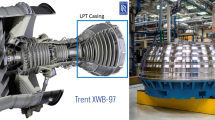Abstract
The widespread use of automation in the printed circuit board (PCB) assembly domain has been dictated by the increasing density of components on PCBs coupled with the continual decrease in component lead pitch, greater product mix, smaller volumes, quality considerations, and the increased cost of labour. However, these advances in technology have also resulted in automated systems that are complex, and solving problems related to these systems requires the efficient use of extensive specialised knowledge.
Expert (or knowledge-based) systems have become a widely accepted problem solving methodology for the surface mount PCB assembly domain. Nevertheless, problems in the PCB assembly domains are frequently unstructured, ill-defined, and difficult to communicate. Artificial neural networks provide a novel approach and an advanced technology to deal with the weaknesses and problems associated with expert systems.
The surface mount component (SMC) placement process plays a vital and influential part in determining the throughput time of a PCB assembly line. It is important to identify an efficient component placement sequence while considering constraints such as feeder location and tooling and nozzle optimisation. This research studied the use of artificial neural networks as a complement to expert systems in PCB assembly. A prototype decision support system that combined the use of artificial neural networks and expert system techniques to identify a near optimal solution for the surface mount placement sequence problem was designed, implemented, and validated. Artificial intelligence based technologies such as expert systems and artificial neural networks were used in a mutually supportive manner to solve a complex problem within the surface mount PCB assembly domain.
Similar content being viewed by others
References
H. K. Jain and A. R. Chaturvedi, ‘Expert systems problem selection: a domain characteristics approach’,Information and Management,17, pp. 245–253, 1989.
D. W. Rolston,Principles of Artificial Intelligence and Expert Systems Development, McGraw Hill, New York, 1988.
G. F. Luger and W. A. Stubblefield,Artificial Intelligence and the Design of Expert Systems, The Benjamin/Cummings Publishing Company, Redwood City, California, 1989.
K. Srihari and G. Westby, “Decision support for PCB assembly using knowledge based expert system”,Proceedings — NEPCON West, Vol. 2, Anaheim, California, pp. 543–554, 1992.
A. Ben-David and Y. Pao, “Self-improving expert systems: an architecture and implementation”,Information and Management,22, pp. 323–331, 1992.
J. E. Dayhoff,Neural Network Architectures: An Introduction, Van Nostrand Reinhold, New York, 1990.
P. D. Wasserman,Neural Computing: Theory and Practice, Van Nostrand Reinhold, New York, 1989.
M. L. Padgett and T. A. Roppel, “Neural networks and simulation: modelling for applications”,Simulation,58(5), pp. 295–305, 1992.
M. Caudill, “Expert networks”,Byte,16, pp. 108–116, 1991.
R. P. Prasad,Surface Mount Technology: Principles and Practice, Van Nostrand Reinhold, New York, 1989.
C. Lea,A Scientific Guide to Surface Mount Technology, Electrochemical Publications Limited, Ayr, Scotland, 1988.
S. W. Hinch,Handbook of Surface Mount Technology, John Wiley & Sons, New York, 1988.
T. Khanna,Foundations of Neural Networks, Addison-Wesley Publishing Company, Menlo Park, California, 1990.
Universal Instruments Corporation,Universal General Specification: Model 4766A SFP, Surface Mounted Component Placement System, Universal Instruments Corporation, New York, 1991.
D. Kroenke,Management Information Systems, Mitchell Publishing, Watsonville, California, 1989.
R. R. Seeley, T. D. Stephens and P. Tate,Anatomy and Physiology, Times Mirror/Mosby College Publishing, Missouri, 1989.
J. Hertz, A. Krogh and R. G. Palmer,Introduction to the Theory of Neural Computation, Addison-Wesley Publishing Company, Menlo Park, California, 1991.
B. Müller and J. Reinhardt,Neural Networks: An Introduction, Springer-Verlag, New York, 1991.
J. C. Giarratano, J. C. Villarreal and R. T. Savely, “Future impacts of artificial neural systems on industry”,ISA Transactions,29(1), pp. 9–14, 1990.
S. Mangrulkar, “Artificial neural systems”,ISA Transactions,29(1), pp. 5–7, 1990.
D. A. Rehbein, S. M. Maze and J. P. Havener, “The application of neural networks in the process industry”,ISA Transactions,31(3), pp. 7–13, 1992.
D. E. Rumelhart and J. L. McClelland,Parallel Distributed Processing: Explorations in the Microstructure of Cognition, Volume 1: Foundations, The MIT Press, Cambridge, Massachusetts, 1989.
B. Kosko,Neural Networks and Fuzzy Systems: A Dynamical Systems Approach to Machine Intelligence, Prentice-Hall, Engelwood Cliffs, New Jersey, 1992.
M. O. Ball and M. J. Magazine, “Sequencing of insertions in printed circuit board assembly”,Operations Research,36(2), pp. 192–201, 1988.
J. Ahmadi, S. Grotzinger and D. Johnson, “Component allocation and partitioning for a dual delivery placement mchine”,Operations Research,36(2), pp. 176–191, 1988.
G. Booch,Object Oriented Design with Applications, The Benjamin/Cummings Publishing Company, Redwood City, California, 1991.
J. McCord,Developing Windows Applications With Borland C++ 3.1, Sams Publishing, Carmel, Indiana, 1992.
A. Blum,Neural Networks in C++: An Object-Oriented Framework for Building Connectionist Systems, John Wiley & Sons, New York, 1992.
J. J. Hopfield and D. W. Tank, “Neural computation of decision in optimization problems”,Biological Cybernetics,52, pp. 141–152, 1985.
L. Kaufman and P. J. Rousseeuw,Finding Groups In Data — An Introduction to Cluster Analysis, John Wiley & Sons, New York, 1990.
Author information
Authors and Affiliations
Rights and permissions
About this article
Cite this article
Su, YY., Srihari, K. Placement sequence identification using artificial neural networks in surface mount PCB assembly. Int J Adv Manuf Technol 11, 285–299 (1996). https://doi.org/10.1007/BF01351286
Issue Date:
DOI: https://doi.org/10.1007/BF01351286




